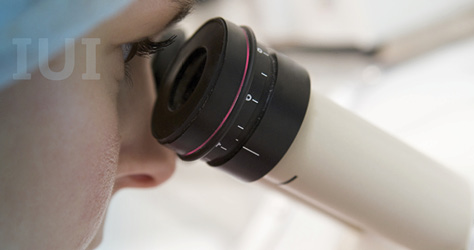If you’ve been trying to get pregnant for a while, you may be starting to think about fertility treatment.
Here’s a quick guide to a common treatment, Intrauterine Insemination (IUI).
At a glance
- You might be offered IUI if you have infertility or ovulation problems that can’t be explained
- It’s also helpful for woman with mild endometriosis
- Doctors separate fast-moving sperm from the slower ones, then use IUI to pop them in your womb

Who is IUI best for?
You might be offered IUI if you have infertility or ovulation problems that can’t be explained. It’s also helpful for woman with mild endometriosis (where small pieces of the womb lining grow in other places), or couples where the man has poor sperm quality or problems ejaculating. IUI is also used as part of other fertility treatments, such as sperm donation or surrogacy.
For IUI to work effectively, your fallopian tubes must be healthy, which will allow the egg to make the journey from the ovary to the uterus. You may need to have a tubal patency test to determine if this is the case. If one tube isn’t open or functioning properly but the other side is, it should still be possible to try IUI.
What’s involved with IUI?
With IUI, doctors separate fast-moving sperm from the slower ones, then use IUI to pop them in your womb, just when you’re about to ovulate. You may be offered fertility drugs to help stimulate your ovaries into producing mature eggs or you may use IUI with a natural cycle that doesn’t use any fertility drugs.
The sperm are passed through a fine plastic tube that enters the cervix and extends into the womb. This procedure is done while you’re ovulating to boost the chances of you getting pregnant.
What does IUI feel like?
Some women may experience temporary cramps similar to period cramps after, or during IUI, but other than that the procedure should be painless.
What are the success rates for IUI?
If the man's sperm and the woman's tubes are healthy, the success rate for IUI in women under 35 is around 15% for each cycle of treatment. Over 35 and the success rate will be 11% with this dropping to 5% for 40 to 42 year old women and 1% if you’re between 43 and 44.
This treatment is only available on the NHS to certain groups and it will probably depend on your Clinical Commissioning Group. To find out more, have a chat with your doctor.